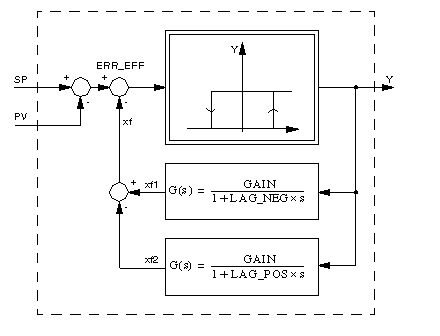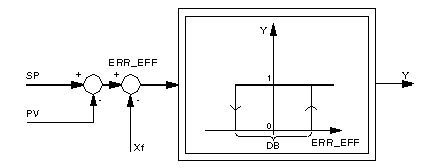|
Detailed description
|
|
|
Original instructions
|


|
Feedback
|
LAG_NEG
|
LAG_POS
|
|---|---|---|
|
2-Point-Behavior (without feedback)
|
= 0
|
= 0
|
|
negative feedback
|
> 0
|
= 0
|
|
negative + positive feedback
|
> 0
|
> LAG_NEG
|
|
Warning, regeneration (neg. feedback with LAG_POS)
|
= 0
|
> 0
|
|
Warning, regeneration (pos. feedback switched off)
|
> LAG_POS
|
> 0
|
|
Operating mode
|
MAN
|
HALT
|
Meaning
|
|---|---|---|---|
|
Automatic
|
0
|
0
|
The function block will be handled as described above.
|
|
Manual mode
|
1
|
0 or 1
|
The output Y is set to the YMAN value.
xf1 and xf2 are calculated using the following formula:
 |
|
Halt
|
0
|
1
|
The output Y is held at its last value. xf1 and xf2 are set to GAIN * Y.
|